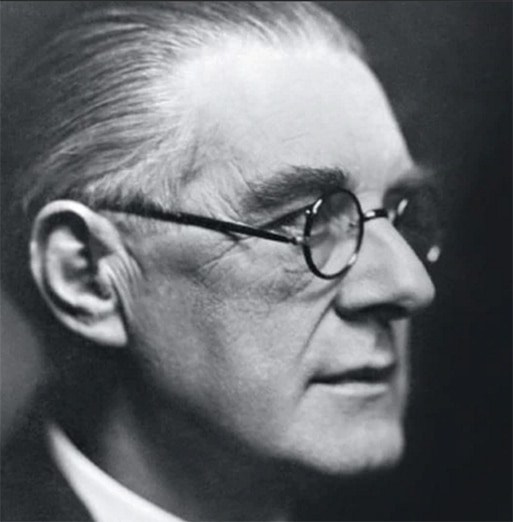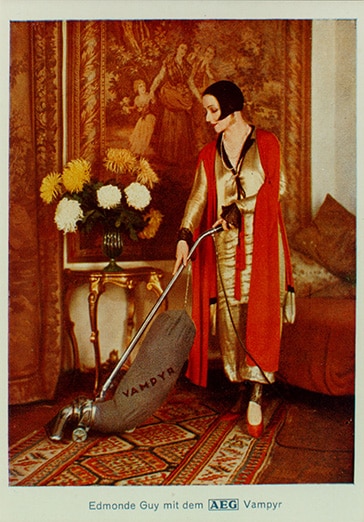The classic German brand AEG is today one of the most important within the Electrolux Group, which offers premium AEG appliances in various European and Asian markets. The story behind the brand involves the rise and fall of one of the world’s largest companies, but above all several world-changing innovations, such as the first electric refrigerator and the first heat pump technology for tumble dryers.
AEG was founded as the “Deutsche Edison-Gesellschaft für angewandte Elektricität” in 1883 by engineer Emil Rathenau. He had purchased the rights to the electric light bulb during the first International Exposition of Electricity in Paris in 1881.
The predecessor to the future global company started by fitting electrical lighting in cafés, restaurants and theaters, which ran on small power stations. They were expensive and impractical, but before the turn of the 20th century, AEG had built 248 such power stations, which together supplied 210,000 hp of electricity for lighting, tramways and household appliances.
In 1907, the visionary architect Peter Behrens was appointed Artistic Consultant at AEG. For his work with AEG, Behrens is considered the founder of modern industrial design. Professor Behrens had a simple but powerful design philosophy: ‘Perfekt in Form und Funktion’. He worked tirelessly to create not only the most functional AEG products, but also the most aesthetically appealing.

“Design is about creating forms that accord with the character of the object and that show new technologies to advantage.” Peter Behrens, Architect and AEG Artistic Consultant
In only a few decades, many of the appliances that still to this day comprise the industry appeared on the market: electric cookers, vacuum cleaners, irons, water kettles, heaters and even hairdryers. The vacuum cleaner Dandy was launched in 1913, which was a worthy competitor to Electrolux founder Axel Wenner-Gren’s first Lux machine.
When World War II broke out, AEG had expanded by acquiring the radio and television company Telefunken and the century-old railway company Börsig. But at the end of the war, the company lost most of its production units, some of which were newly built units in the German-occupied areas in the east. Soviet and French troops dismantled and removed the factories in Berlin.
Instead AEG built new, modern factories in West Germany. In 1970, AEG was one of the world’s largest electronics companies with 178,000 employees. The impression was that the company had built up a bureaucratic organization with an oversized head office.
The household products in AEG Hausgeräte became a growing part of the Group as a third of the women in West Germany entered the workforce and the demand for labor-saving appliances grew, as it had in many other countries. Originally encompassing products such as cookers, vacuum cleaners and hairdryers, operations were expanded to include refrigerators in 1950 and the fully automatic washing machine Lavamat in 1958. “Aus Erfahrung Gut” (good by experience) was the motto of AEG Hausgeräte.

The classic AEG Vampyr vacuum cleaner promoted by 1920s actress Edmonde Guy
Competition toughened in Germany in the 1960s with the addition of low-price imports from Italy. The former rivals Bosch and Siemens merged. In 1975, AEG-Telefunken was the 54th largest industrial company on the global list of Fortune magazine, three times the size of Electrolux. The number of employees had dropped to 162,000, and the Group was making losses, small ones, but they appeared to be chronic. A large investment in nuclear power had failed, and exports had never taken off. The factories in Berlin were closed one by one.
The main problem of AEG was that too many activities were of the wrong scale. AEG Hausgeräte now comprised roughly one-fifth of the Group, but the division that was going strong in Germany and the neighboring countries represented no more than 6% in Europe. In Germany, AEG had 15% of the market, but the mail order company Quelle with its imported major appliances was bigger than AEG.
In 1982, the Group filed for insolvency, and as of 1985, AEG had merged into the automotive Group Daimler-Benz. However, the vision of a major tech group was not realized. Instead, the pieces of AEG ended up in many other companies. In 1994, it was eventually acquired by the Electrolux Group.
As the owner of the rights to the AEG trademark for household products and a number of other categories, Electrolux has continued to honor its German legacy. To this day, AEG adheres to Behrens design philosophy and to AEG’s tradition of innovation.

